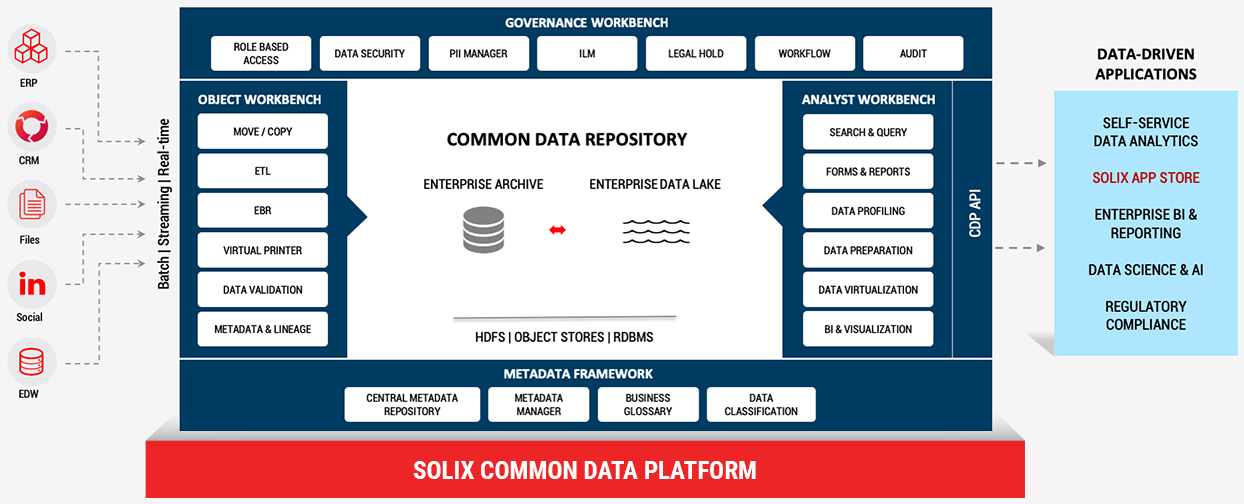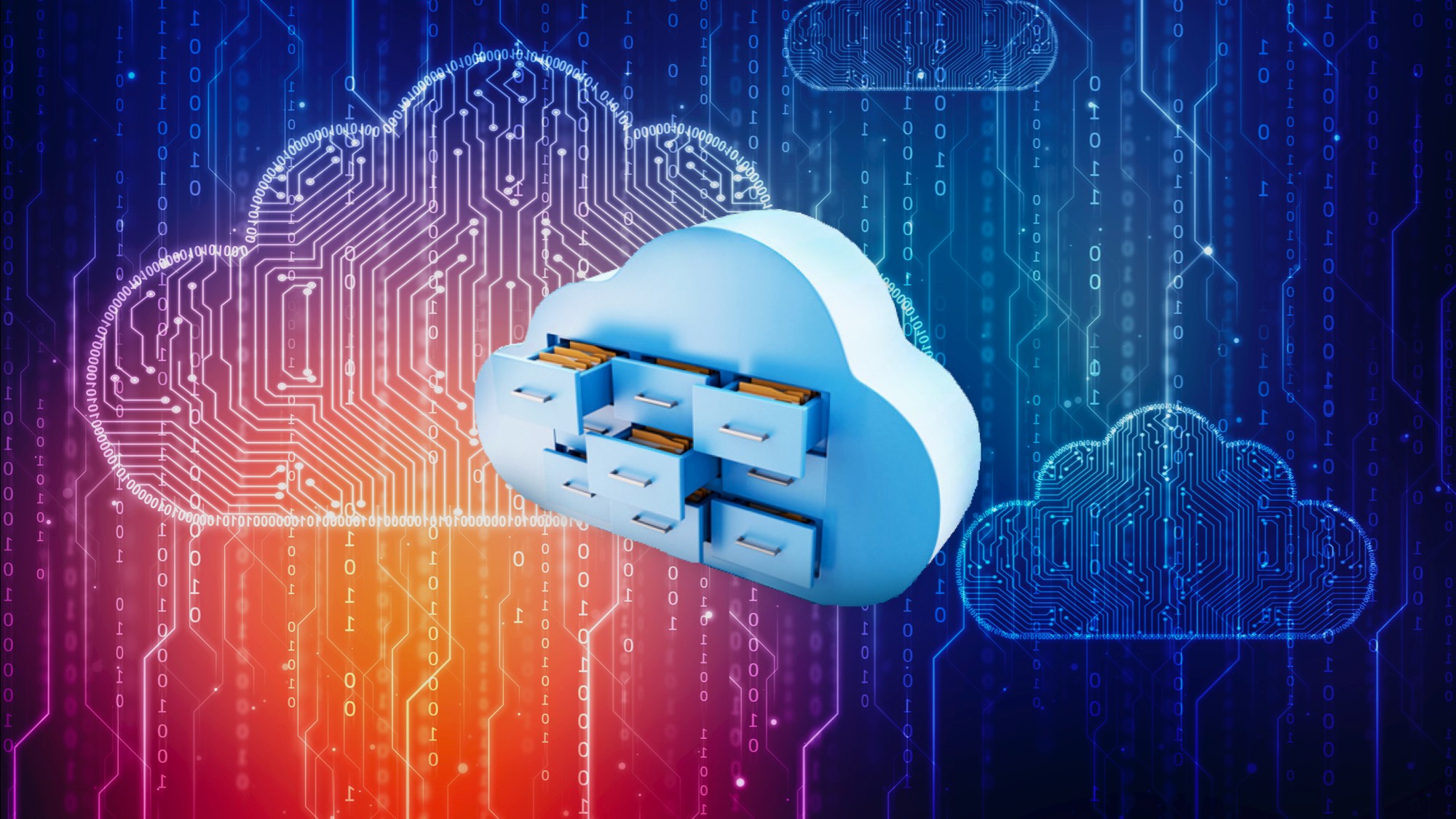
The Solix Common Data Platform (CDP)
30 years ago Peter Drucker, the great management guru, famously said, “If you can’t measure it, you can’t improve it.” He understood the power of data to create business knowledge and drive business results in real-time. His vision remains strong today by influencing the software design that powers the data-driven enterprise.
Enterprise resource planning (ERP) emerged as the first blueprint for the data-driven enterprise. ERP delivered a single version of the truth for financial data in a consistent, online database capable of real-time business intelligence and reporting. The efficiency shaved weeks off close cycles, free capital, and armed managers with advanced analytics to make much better decisions, faster.
Years later, Drucker’s data-driven vision is as relevant as ever, but the software requirements have changed. Even the data has changed from structured financial data to all kinds of data including logs, emails, and unstructured data like documents, spreadsheets, images, and videos.
Unstructured and semi-structured data today makeup 80% of all enterprise data and are growing at an extreme rate of 55% and 65% per year.1 And all of this data is stored on disparate file servers in silos across the enterprise. The single version of the truth no longer holds all the data.
The Solix Common Data Platform
The Solix Common Data Platform (CDP) is a uniform data collection and metadata management system for all enterprise data and a common repository enabling data governance, security, and advanced analytics applications.

Apache Hadoop is a free, open-source, and trusted for its strong data management capabilities. The Solix Object Workbench controls the data fabric to MOVE or COPY any data into Hadoop. Leveraging commodity infrastructure and low-cost bulk data storage, Hadoop stores and processes large data sets across distributed compute nodes in parallel. The result is improved data governance and more efficient enterprise data management across a wide variety of workloads.
The Solix CDP Governance Workbench supports Information Lifecycle Management (ILM), CoBIT, GDPR, PHI, PCI and FISMA compliance frameworks. Data security features include end-to-end encryption, data masking “on-the-fly,” privilege management, and role-based access controls for all users.
The Solix CDP Analyst Workbench provides data preparation and visualization, structured and ad hoc query, text search, and an API for third party access to all data.
Enterprise archiving establishes a best practice data ingestion strategy thru policy-driven, active archiving of production data landscapes. Enterprise data lakes form the common data repository to drive advanced data-driven applications.
Data-driven Enterprise 2.0: Solix CDP
Next-generation data-driven applications require access to data in real-time no matter what kind of data is required or where it is located. Consider a fraud detection app that instantly correlates point of sales data, Know Your Customer (KYC), credit card, and mobile data in order to send an SMS text to verify ID when a credit card is accessed from a strange location. Such data-driven applications utilize NoSQL and schema-on-read data access to integrate large amounts of data from multiple sources and process updates in real-time.
Big data powers data-driven applications because it enables business users to describe and view data in more specific ways. ERP and enterprise data warehouses only support structured data with canonical, top-down schema design which may not always satisfy data-driven requirements. By ingesting enterprise data into a data lake “as-is,” costly ETL operations are reduced, and data is immediately staged for downstream processing.
Just as ERP measured financial data better, the common data platform captures all enterprise data, regardless of format or source, and runs on commodity infrastructure or in the cloud reducing costs and avoiding vendor lock-in. Data-driven enterprise 2.0 measures more data better and improves business results just as Peter Drucker said.
Related Posts

Introducing Solix Common Data Platform 3.0

Solix Technologies, Inc. Announces Strong Customer Momentum for SOLIXCloud Enterprise Archiving Solution; Named a Visionary in 2022 Gartner® Magic Quadrant™ for Enterprise Information Archiving

